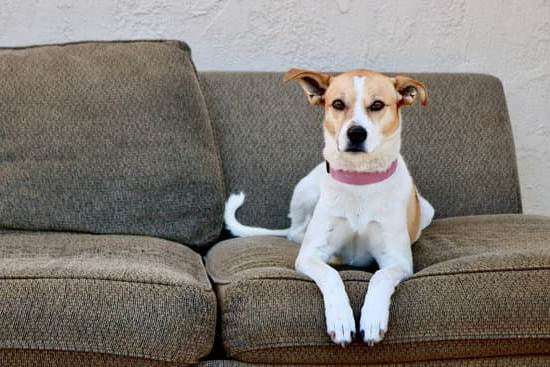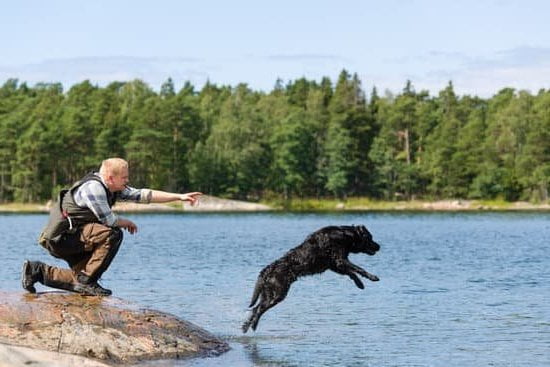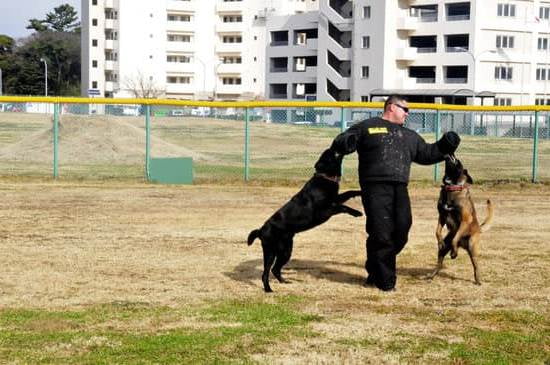Training An Older Dog To Walk On A Leash
Some people might think that training an older dog to walk on a leash is a waste of time, but it’s actually a very important skill for them to learn. Not only does it keep them safe, but it can also make walks a lot more pleasant for both you and your dog.
The first step in training an older dog to walk on a leash is to get them used to wearing a collar. Start by putting the collar on them for a few minutes at a time, and then gradually increase the amount of time they wear it. Once they’re used to the collar, attach the leash and give them a few treats. Once they’re comfortable with that, start walking them around the house.
Once your dog is comfortable walking around the house, start taking them for walks outside. The key to getting them to walk on a leash is to keep the leash loose and let them wander around. If they start to pull, simply stop walking and wait until they calm down before continuing.
It may take a little bit of time, but with patience and persistence, you can train your older dog to walk on a leash.
How To Train Dog To Come Off Leash
Training your dog to come when called is an important skill for both you and your pet. A well-trained dog will come when called, even if there are distractions present. Teaching your dog to come is not difficult, but it does require patience and consistency.
The first step in training your dog to come is to teach him the command “come.” Start by saying “come” in a happy voice, and then rewarding your dog with a treat when he comes to you. Once your dog has mastered this command, you can start working on training him to come when called in a variety of situations.
One of the best ways to train your dog to come is to use a leash. When your dog is coming close to you, give the command “come” and then pull the leash gently towards you. If your dog doesn’t come, give him a light tug and then say “come” again. Be sure to reward your dog with a treat when he comes to you.
Another way to train your dog to come is to use a recall word. When your dog is close to you, say the recall word and then give him a treat. Once your dog understands the command, you can start using the recall word in different situations.
It’s important to be patient when training your dog to come. Some dogs may take longer than others to learn the command. Be sure to praise your dog when he does come to you, and don’t scold him if he doesn’t obey the command. With patience and consistency, your dog will soon learn to come when called.
Dog Pulling On Leash Training
When a dog pulls on the leash, it’s often because he is trying to get somewhere. He may be excited to see another dog or person, or he may be trying to get to a particular spot in the park or on the street. The best way to train your dog to stop pulling on the leash is to teach him that when he pulls, he gets nowhere. You can do this by using a training technique called “leash walking.”
To leash walk your dog, you will need a six-foot leash and a treat bag. Start by putting your dog on a short leash, about three feet long, and have a treat in your hand. When your dog pulls, stop walking and wait for him to stop pulling. Once he has stopped pulling, give him the treat and resume walking. If he starts to pull again, stop walking and wait for him to stop pulling. Once he has stopped pulling, give him the treat and resume walking.
Repeat this process until your dog walks by your side without pulling on the leash. Once he is able to do this, you can slowly increase the length of the leash. Be sure to continue rewarding your dog for walking by your side and not pulling on the leash.
How To Train A Dog Walk On Leash
There are a few basic things you need to teach your dog in order to make walking on leash a positive experience for both of you. Start with teaching your dog to come when called. If your dog is coming to you every time you call him, it will be much easier to keep him close by when you are walking him on leash.
Next, teach your dog to heel. This means keeping him at your side and walking in sync with you. You can use treats or a toy to reward him for staying close to you. If your dog tends to pull on the leash, start by teaching him to “heel” on a short leash. As he becomes more comfortable with this behavior, gradually lengthen the leash.
Finally, teach your dog to stay. This is an important command to have in case you need to stop suddenly or want to keep your dog from running into the street. Again, you can use treats or a toy to reward your dog for staying in place.
Once your dog knows these basic commands, walking on leash will be a breeze. Just remember to always be consistent with your commands and rewards, and to keep your training sessions short and positive.
How To Train A Dog For Leash Walking
Most dog owners struggle with their dog pulling on the leash. They are either constantly being pulled towards the end of the leash or are having to use a lot of force to keep their dog close. Training your dog to walk on a leash does not have to be difficult, but it does require patience and consistency.
The first step is to make sure your dog is comfortable wearing a collar. Start by putting the collar on your dog without attaching the leash. Let your dog wear it for a few hours a day, and then gradually increase the amount of time. Once your dog is comfortable wearing the collar, you can start to attach the leash.
The best way to train your dog to walk on a leash is to start with a short leash and gradually increase the length. Begin by attaching the leash to your dog’s collar and holding the leash in your hand. When your dog is walking close to you, give the leash a light tug and say “heel.” If your dog pulls ahead, stop and wait for your dog to come back to you. Once your dog is walking close to you, give the leash a light tug and say “heel.” If your dog pulls ahead, stop and wait for your dog to come back to you.
If your dog is constantly pulling on the leash, you will need to be consistent with your corrections. When your dog pulls, stop and wait for your dog to come back to you. Once your dog is walking close to you, give the leash a light tug and say “heel.” If your dog pulls ahead, stop and wait for your dog to come back to you.
It may take a few days, but eventually your dog will learn that if he pulls on the leash, he will stop and wait for you. Be patient and continue to praise your dog when he walks close to you.

Welcome to the blog! I am a professional dog trainer and have been working with dogs for many years. In this blog, I will be discussing various topics related to dog training, including tips, tricks, and advice. I hope you find this information helpful and informative. Thanks for reading!





